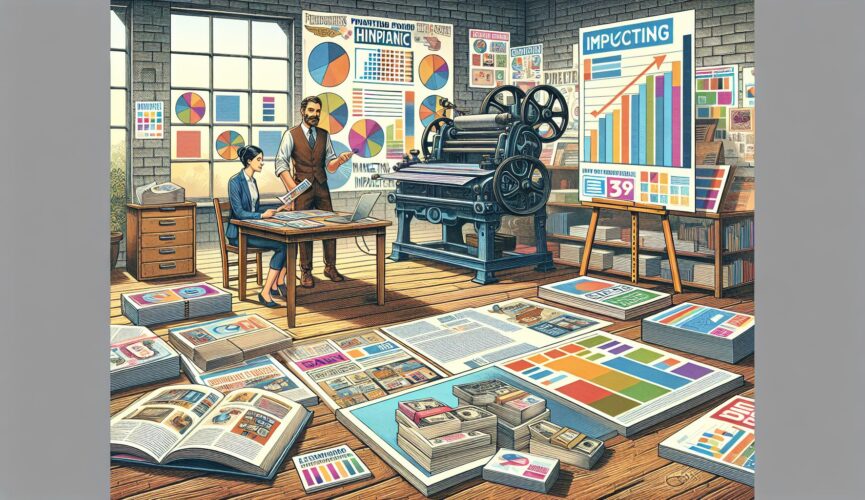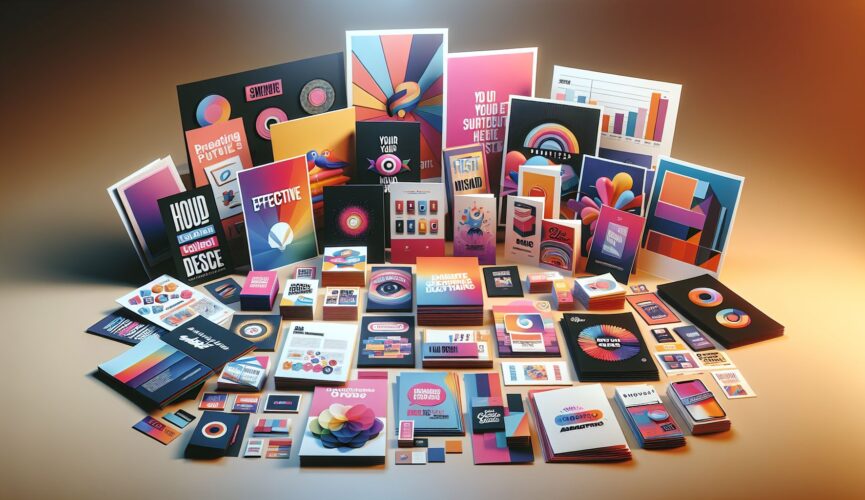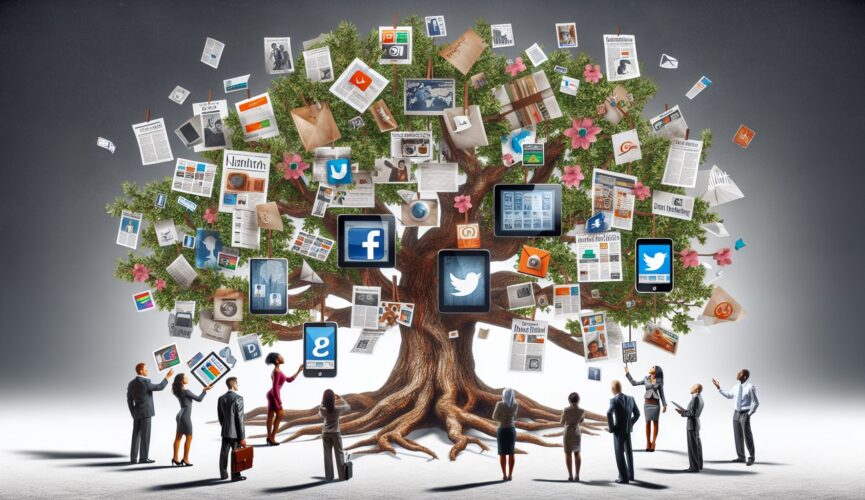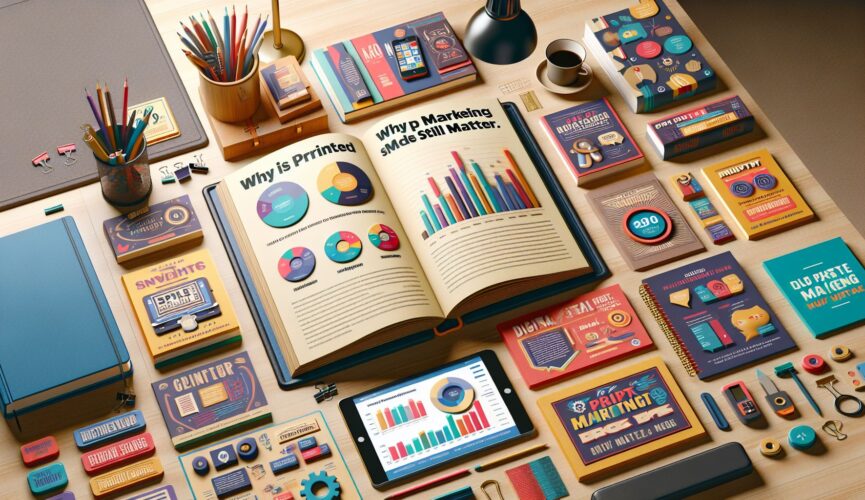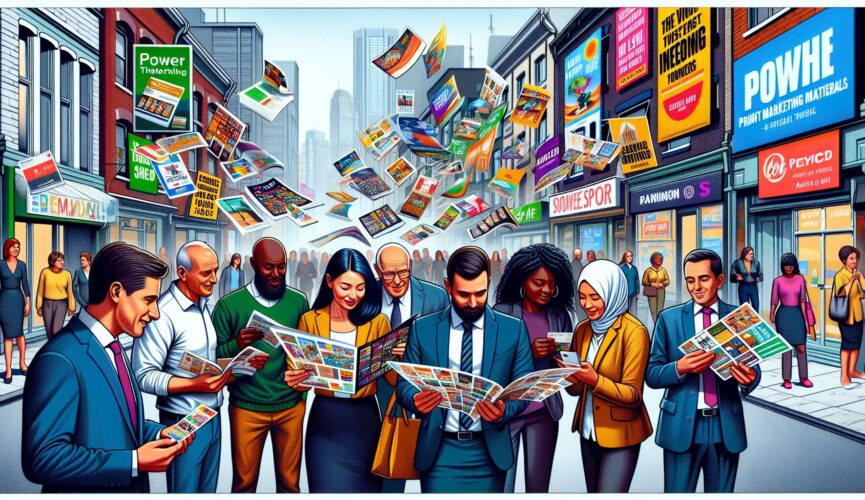In today’s digital age, it’s easy to assume that printed marketing materials have become obsolete. After all, with the rise of social media, email marketing, and online advertising, it seems that everything has shifted to the virtual realm. However, printed marketing materials still hold immense power and value. In this article, we will explore why printed materials are still relevant, their benefits, and how they can be effectively used to enhance your marketing efforts.
Importance of Printed Marketing Materials
Despite the digital revolution, the physical aspect of marketing materials still holds a unique place in the hearts and minds of consumers. There is something about holding a tangible item that elicits a different emotional response compared to scrolling through a screen. Printed marketing materials offer a sense of trust, credibility, and personal connection that digital marketing often fails to achieve.
Tangible and Memorable
When you receive a well-designed brochure or business card, it’s more likely to grab your attention and remain memorable. In contrast, a promotional email can easily get lost in a cluttered inbox or be quickly deleted without a second thought. Printed materials have a physical presence that allows them to command attention and create a lasting impression.
Establishing Credibility and Trust
In a world full of online scams and fraud, printed marketing materials can help establish credibility and trust. A professionally designed and printed brochure, for example, shows that your business is legitimate and committed to quality. It signals that you are investing the time, effort, and resources into your marketing efforts.
Targeting Specific Audiences
Printed materials offer versatility in targeting specific audiences. Whether it’s through direct mail campaigns or distribution at events and trade shows, you have the ability to reach individuals who are more likely to engage with your brand. Instead of casting a wide net online, you can strategically place your materials in the hands of potential customers who match your target demographic.
Benefits of Printed Marketing Materials
Now that we understand the importance of printed marketing materials, let’s explore the specific benefits they provide for businesses.
Increased Brand Visibility
Printed materials can increase brand visibility, whether it’s through a well-placed billboard, a logo-emblazoned t-shirt, or a brochure left in a waiting room. By consistently exposing potential customers to your brand through printed mediums, you reinforce your presence in their minds. Over time, this can lead to improved brand recall and recognition.
Enhanced Customer Engagement
Printed materials provide a sensory experience that engages customers on multiple levels. From the texture of the paper to the colors used, printed materials offer an opportunity to evoke emotions and connect with your target audience. Engaging customers through various senses can leave a more profound impact on their perception of your brand.
Longer Shelf Life
Digital content tends to have a short lifespan. It can easily be scrolled past, forgotten, or buried within a sea of other online advertisements. On the other hand, printed materials have a longer shelf life. A brochure, for example, can sit on a desk or be filed away for future reference. This extended visibility increases the likelihood that your marketing materials will be seen and remembered.
Tangible Call-to-Action
Printed materials allow for a tangible call-to-action (CTA). Whether it’s a coupon to be redeemed in-store or a tear-off form to request more information, physical marketing materials provide a direct and measurable way for customers to engage with your business. By incorporating a clear CTA into your printed materials, you can drive action and track responses more easily.
Effective Use of Printed Marketing Materials
To make the most of printed marketing materials, it’s essential to consider the following strategies.
Consistent Branding
Consistency is key when it comes to branding. Ensure that your printed materials align with your overall brand identity, including colors, fonts, and messaging. Consistent branding creates a cohesive experience for your customers and reinforces brand recall.
High-Quality Design and Printing
Investing in professional design and high-quality Printing is crucial for creating impactful marketing materials. Amateur designs or poorly printed materials can reflect negatively on your brand. By partnering with a reputable design and Printing service, you can create materials that effectively communicate your brand’s value.
Integration with Digital Marketing
While printed marketing materials have their own unique advantages, they can also work hand-in-hand with digital marketing efforts. Include QR codes on your materials that lead to specific landing pages or incorporate URLs and social media handles to encourage cross-channel engagement. This integrated approach allows you to leverage the strengths of both print and digital marketing.
Targeted Distribution
Identify where your target audience spends their time and distribute your materials accordingly. This could include placing brochures in local businesses, distributing flyers at events, or mailing postcards to a specific demographic. By strategically placing your materials in front of the right people, you increase the chances of generating meaningful leads.
Conclusion
Printed marketing materials may not be as prevalent in today’s digital world, but they still offer a unique set of benefits for businesses. Their tangibility, credibility, and ability to create memorable experiences make them an essential component of any comprehensive marketing strategy. By understanding the power of printed materials and effectively utilizing them, businesses can enhance their brand visibility, engage customers on a deeper level, and drive better results. So, don’t underestimate the tangible power that printed marketing materials hold – they might just be the missing piece in your marketing puzzle.




